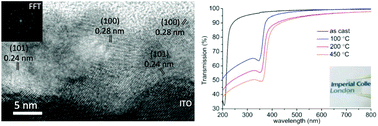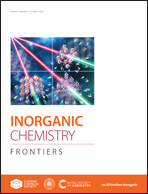Effect of processing temperature on film properties of ZnO prepared by the aqueous method and related organic photovoltaics and LEDs†
Abstract
Here the influence of processing temperature on the properties of zinc oxide (ZnO) thin films fabricated using a carbon-free solution process is investigated. Our results show that the film processing temperature influences a wide range of structural and electro-optical properties. Films processed at 100 °C are shown to be formed of coalesced ZnO nanoparticles, whose dimensions increase with the processing temperature, accompanied by an increase in electron mobility. ZnO films processed at different temperatures were incorporated as electron transport layers (ETLs) in organic photovoltaic devices with PCDTBT:PC71BM as the active layer. We find that the ETLs processed at low temperature (100–200 °C) exhibit good device performance compared with those prepared at elevated temperatures, an effect we attribute to shifts in the work function and electrical conductivity. Interestingly a similar trend is observed when our ZnO is used as an electron injection layer in organic light emitting diodes, where the EILs processed at >200 °C show higher turn-on voltages and lower efficiencies than those annealed in the 100–200 °C range.



 Please wait while we load your content...
Please wait while we load your content...